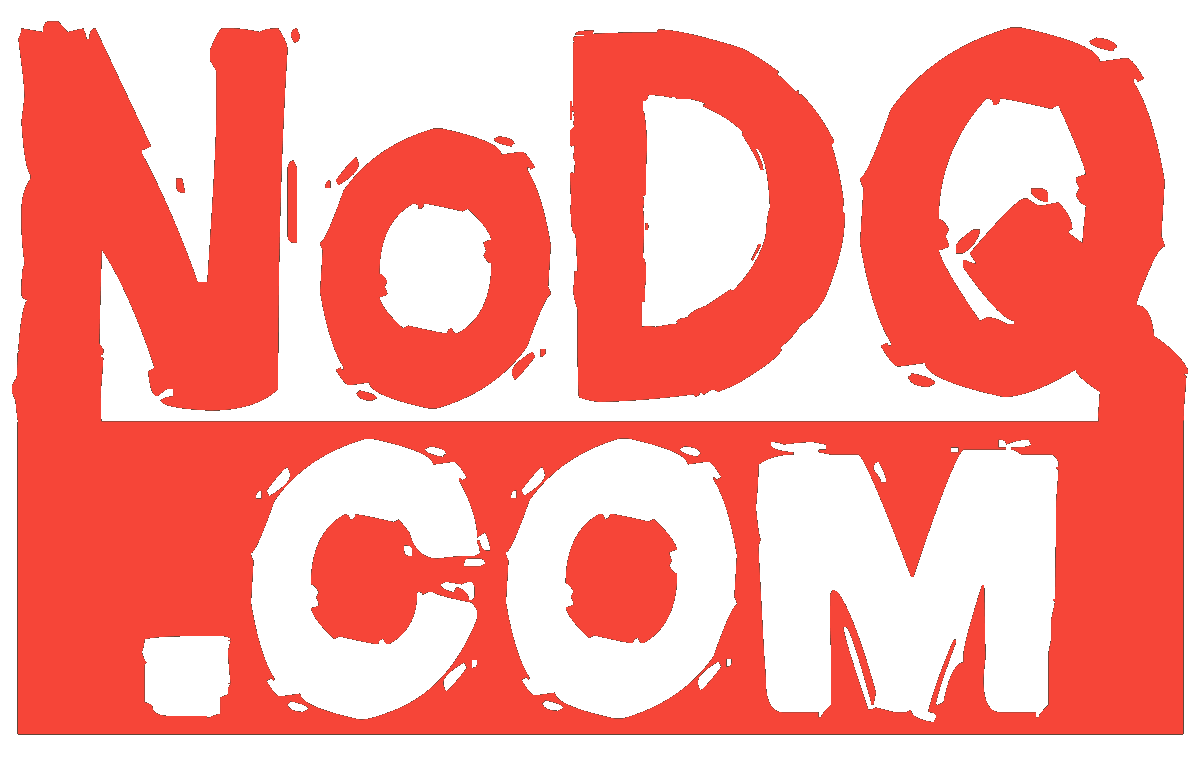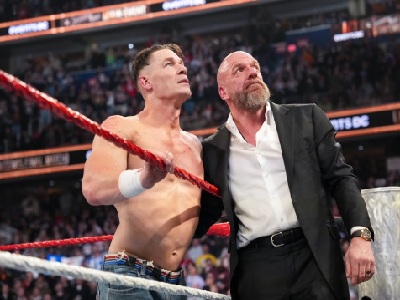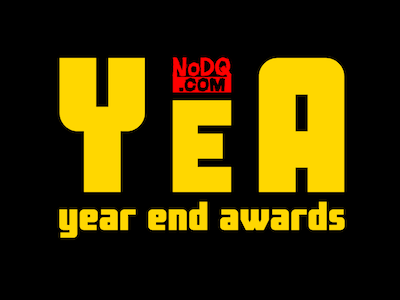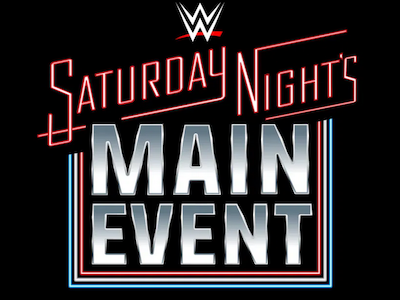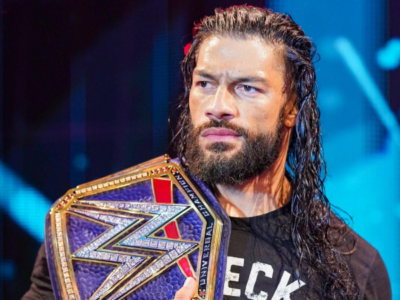The Steamy Files: No Country For Old Men (Part 2)
Welcome back to the Steamy Files. If you missed last week’s column, the first part of this series called “No Country For Old Men”, you can find it here. We looked at Vince McMahon’s legacy in the light of the fallout from the Janel Grant lawsuit and specifically, the response from former wrestlers and talent to this troubling story.
In Part 2, we’re moving away from these old men and I’m addressing the obsession with numbers by both young and old, as well as what I’ll call “outrage culture”. Without any further delays, let’s jump right into it.
2-Crunching the numbers
Imagine this: Michael and Jermaine are sitting down and having a beer, talking about different topics when suddenly they move to hockey. Michael is a Philadelphia Flyers fan, but Jermaine is a Pittsburgh Penguins fan. Both teams played last night and won against their respective opponents. They’re debating which team is better when Jermaine suddenly says “Hey, did you see the TV ratings? The Penguins got more viewers than the Flyers, so clearly, they’re the better team.”
You can’t, can you? That’s because it never happens. Yet, amongst wrestling fans, we have an obsession with this metric.
2.1.-Ratings, ugh, good God y’all, what is it good for?
Absolutely nothing, say it again!…sorry, I got carried away there. Now this isn’t true, ratings aren’t “good for nothing”, rather the way they’re presented and especially interpreted by the IWC is pure baloney. Myself and many others have explained this before so I don’t think this is new information, but given that the message can’t seem to land, let’s try it one more time.
What you see reported as “TV ratings” by various online sources are published by a company called Nielsen Media Research. Nielsen selects a small pool of volunteers in the USA based on different criteria and track their viewing habits.
Unless you are a Nielsen family, your viewership habits do not count towards establishing ratings. That makes sense, right? Can you imagine tracking the habits of hundreds of millions of people in 15-minute increments and being able to accurately collect the data and publish it in less than 24 hours? Not to mention the privacy concerns. I don’t think most people would like the idea of their viewing habits being tracked without their consent.
2.2-How do they come up with the ratings then?
Glad you asked. I mentioned a pool. Now how many people are actually part of that pool? We don’t know. Nielsen does not release this information to the public, but I’ve seen estimates that it’s somewhere between 20,000 and 40,000 people.
Now how can it be so few and yet we get a number that’s in the hundreds of thousands if not millions of viewers? That’s the second part of the mystery of Nielsen. Not only does Nielsen not disclose their volunteer count, they don’t publish their raw numbers either. By raw numbers, I mean the actual number of people in the focus group that watched the show.
This causes an issue that is really at the root of the entire futility of the debate, why are the numbers presented this way if they only are calculating it from a small volunteer pool (and yes tens of thousands in a country that has hundreds of millions of people is small)? What is the equation that is used by Nielsen to come up with the number? That’s not public information either.
2.3-The demos
Now the demo ratings are different. The reason there has been a focus in recent years geared towards “demo ratings” instead of the “number of viewers” is because as with any good focus group, Nielsen has data regarding who its volunteers are. They know what sex they are, what age they are, they also probably know their ethnicity and probably their income range. Given that Nielsen uses physical equipment that is installed in the participants’ home, they have access to all this information that is coveted by networks and advertisers.
Notice how demo ratings, unlike the viewership numbers, are not presented as a number but a share? This allows networks to know what percentage of a certain demographic is watching a show, and when it comes to discussions with advertisers, which helps to determine where money is spent.
2.4-Advertisers and networks
I know exactly what some people will say to the above sections. They will argue that it doesn’t matter what I say or how ratings are calculated because networks use ratings to determine which shows to renew and advertisers use them to determine which show their ads should run on. While there is some truth to that, it’s not that black and white.
Nielsen is the one of the only known sources of viewership data available. The entertainment industry is looking for an alternative and given the change in how people consume media it’s becoming less relevant by the day, but for now, Nielsen is pretty much all they have.
What the ratings are for these companies is more of a comparison. Let’s say you launch a new TV show on your network, prime time on a weeknight. The debut episode gets an estimated 10 million viewers. Week 2, however, you’re down to 7 million. Well, debuts usually get higher numbers, especially if there was a lot of marketing prior to air time, it’s quite common to see a dip. Week 3, you’re down to 5 million and eventually you dip down to 150K-200K every week.
While your show had the biggest estimated viewership for the night when it launched, it ends up dead last by weeks 6-7. That is a problem. If the show I mentioned in my hypothetical features A-list stars, well-known directors and producers and costs a lot of money to produce, the expectations are much higher. Also keep in mind that scripted television will feature about 10-22 episodes per season, will go on a mid-season hiatus and eventually will end. That means the cost to air per episode is much higher than if you say, pay a flat fee to a wrestling company, get 52 weeks of content every single year while never having to worry about dealing with the WGA, DGA or SAG.
As for advertisers, unless you have a smash-hit runaway show like a Seinfeld, large companies do not have the time to look at individual shows and pick which specific ones they wish for their ads to run on. They will look at overall network performance and they may also want to stay away from a show that’s controversial or risks bringing bad PR, but those are now mostly featured on premium channels which don’t rely on advertising revenue.
2.5-Fan discourse
Why do wrestling fans put so much stock into this number given everything I’ve pointed out above? While I can’t reach into everyone’s mind and see what their true reasons might be, I can guess.
The main reason, I believe, is bad faith. I think a lot of people know very well that ratings are not scientific numbers. While you may be wrestling fans, you have other interests. Are you looking at the TV ratings for each and every show you watch on TV? Will you use the numbers for a show you dislike as a way to trash it or vice versa? Didn’t think so.
What these people are doing is just using this as an excuse to attack others. They will ignore any number they see as “good” and just take any opportunity to parrot a number they see as “bad”. It’s another form of tribalism. They use this number as a shield, to turn the conversation not from “I don’t like the show” to “The show is objectively bad because this metric proves it”. I go back to my imaginary scenario at the beginning with Michael and Jermaine. Sports fans will chirp each other, they’ll have allegiances to certain teams and hate others. They might make fun of a team’s bad loss against an inferior opponent; they may point out how so-and-so is overpaid for his production or anything else basically.
The difference is that competitive sports have actual statistics to back up their arguments. If your team loses, they fall down the standings, have a lesser chance of making the playoffs and if they don’t make the playoffs, you can’t win the championship. That’s not the case in wrestling. Wins and losses may matter in storyline, but we know they’re predetermined and so we have to find another number to hang our hats on.
2.6-The origins of the debate
Ratings were not really a topic that wrestling fans cared about until the launch of Monday Nitro in 1995. Before WCW, there had only ever been one major wrestling company with a global reach and that was the WWF.
Once the battle was on, there needed to be a way to proclaim a victor every week. While fans could always debate about which show was better, that wasn’t a tangible metric. Ratings, however? Well, they’re numbers, so if one number is higher than the other, then you’ve technically won, right? That’s how it goes in sports. The team that wins the game is the one that has scored the most points.
My recollection at the time was that while fans were interested in the ratings, it always seemed more of a curiosity than a way to declare superiority. Eric Bischoff, however, really cared about the ratings. While the WWF was a privately owned business who was worried about ticket sales, merchandise sales and PPV buys, it’s clear that Eric Bischoff had a singular focus. The WWF cared about the ratings too, but for WCW and Eric Bischoff it was an obsession.
From the get-go, Bischoff did everything he could to get people to watch his show and not Monday Night RAW. Even when WCW was at its hottest, it was a mess, and they rode the nWo horse into the ground because they weren’t worried about long-term financial stability. WCW was a line item on a major corporation’s balance sheet. Ted Turned had a soft spot for the company and didn’t care how much money they lost. WCW never had to worry about getting rights fees, they were owned by the very network they were airing on. This obsession would eventually catch up to WCW and cause its demise. WCW set the rules of engagement in place, WWF agreed to them and the IWC has been obsessed ever since.
2.7-Letting go of the past
In the late 90s, if you didn’t watch a show while it was airing, you had to either tape it on a blank VHS (which meant the TV was off-limits during that time) or catch the replay. Fans would switch back and forth between Nitro and RAW constantly because (unless they had two TVs), they couldn’t watch both. This meant that the difference between a win or a loss was being able to give the people a reason to stay tuned in longer to your show and not the competition. Remember, no DVR so if you switched during a commercial break, you had to constantly switch back to see if the other show was back on, or you risked missing something.
There also weren’t as many options as there are today and you couldn’t just catch highlights on social media since it didn’t exist. While Nielsen was still using the same model, they had a larger pool of volunteers and there were fewer TVs and no such thing as smartphones or tablet for people to view live content on.
It’s time to let go of that passé mentality. If you’re a wrestling fan, the Nielsen numbers should be of no importance to you. Either you enjoy a product or you don’t. Make your arguments based on what is actually on the screen and come up with your own reasoning why you like/don’t like something. If you’re a bad faith actor, get a life. No one is forcing you to watch a product, there are so many other options, just do or watch something else, don’t try to justify your opinion by trotting out “ratings” as an attempt to prove your point.
3-History and outrage (mini-rant)
I had originally planned to separate this into two sections with the same format as above, but after writing half of it, it didn’t feel right so I am scrapping it and starting over. Instead, I’m just going to go a mini rant.
Young bloods, you don’t know what the hell you’re talking about half the time and it’s irritating me. Y’all need to learn your history before posting idiotic takes. Let’s start with Roman Reigns. It’s a fact that RR’s title reign is not in the same league as Bruno, Backlund and even Hogan. Sure, he’s held some version of the belt for nearly 4 years, but that’s because he’s only defended it about 54 times. Compare that to the previously named champions who would work and grind, defending on average once every 2-4 days.
It’s true, the business was very different back then. TV was just a loss leader to get people to buy a ticket for a live event, which is exactly why you don’t see 4-year-long world title reigns anymore. You can’t just put on the same match day after day in another town, people will lose interest quickly. Is that Roman’s fault? No, of course not. He’s not the one who chose to keep the belt on him for so long, that was WWE. The obsession with numbers makes them want to trout out that “Oh he’s been champion for 20,052 days” or whatever, but that doesn’t mean he’s on the same level as the OGs.
If you asked Joe Anoa’i if he thought his title reign was on the same level as Backlund and Sammartino (even Hogan), he would probably say no. He comes from a wrestling family and he knows how important the World Championship is. That used to be the biggest prize in your promotion. Everyone in kayfabe was gunning for a shot at that title and winning it was not only a recognition of your talent, but it was also a way to earn more money. Wrestlers did not have guaranteed contracts back then. You didn’t work, you didn’t get paid. The better the champion drew, the more money for everyone down the card, so not having your champion wrestle for months was unheard of.
WWE has pegged Roman as their golden boy and that’s their decision. But don’t try and tell me that it’s an all-time epic championship run. If you like RR and the Bloodline story and don’t mind that his titles never get defended, that’s totally fine, but don’t be disrespecting the legends by trying to put them in the same boat as a paper champion.
While we’re on the topic of defending dumb takes, what is with your obsession with being the white knight to all women wrestlers? I like women’s wrestling just as much as the next guy, but there is this new breed of fan who just wants to shield them from any criticism. When Maxxine Dupree got booed at a house show, not only fans but even wrestlers themselves jumped on Twitter to call out the fan. The fan mind you. Not the company that hired a girl with no wrestling experience and is putting her in a difficult position. Kudos to Maxxine for doing the work, and for staying out of this mess. She did the smart thing and didn’t comment on the video of her getting slightly booed or about the massive fake outrage that followed.
Are there lines you don’t cross as a fan? Of course. You shouldn’t harass the talent either IRL or when they’re performing by trying to make yourself the centre of attention. You should never jump the barricade and go into the ringside area or the ring itself unless invited and you should follow whatever rules are in place by the promotion in regards to your conduct. However, boo and cheer whomever you like for whatever reason you like. You paid your ticket, it’s your god-given right to express yourself. It speaks to how sheltered some of these fans have been given their reasoning that you can’t boo Maxxine because “she tries hard”. She’s a professional athlete and entertainer, it’s part of the gig. I also noticed that a lot of the people who were commenting negatively on the fan were performers who were either trained by WWE or who had very little experience before and were signed at a very young age.
It’s great that y’all want to support each other and that you love your friend and are encouraging her to succeed. Send her a text, give her a call, send a DM, but don’t try and gatekeep how fans should react to her character when she’s in a wrestling ring. That’s the problem when you don’t have to get yourself over and grind before being allowed to join the biggest sports entertainment company in the world, you become entitled and feel that you deserve your spot and that no one can criticize you because they haven’t been in your shoes, but you are dead wrong.
I went back to edit this column after seeing Trish Stratus’ comments on social media. She called the fans talking about Maxxine having a bad match as “keyboard warriors” and went with the old “You try it then”. I was not expecting someone who came up during an era where women’s wrestling was a sideshow and who really started as eye candy to have this dumb take. Trish, the public and the keyboard warriors are your paying customers. We can and will criticize when we feel someone has a bad match. Can you imagine Johnny Depp or some other actor coming out and blasting the audience for not liking a movie. Saying something like “Make your own movies if you’re so great”. The men are not above being critiqued for a bad match and yet you don’t see this kind of reaction to them from the rest of the IWC. So what if she’s learning? She chose to take the job knowing what came along with it. You think no men have ever been booed after a bad showing? Being a public figure means that you will face criticism. Even I, who is by no means of any relevance to anyone, get criticism. Sometimes I agree, sometimes I don’t, but I will not say someone can’t criticize me unless they also write columns. Keep in mind that what I do is free, but I choose to post columns and I understand that doing so may result in backlash, I don’t have to always like it but I have to accept it.
Again, harassment, insults or slurs are not the same as just being booed. The fan didn’t like Maxxine’s performance that night and he used his voice to boo as a way to let it be known. She’s a grown woman and she chose to take this route; it’s par for the course. Even in competitive sports leagues like the NHL, the NBA or the NFL, you’ll see athletes getting booed. Watch videos of how Eric Lindros was welcomed at the Quebec Coliseum after he refused to play for the Nordiques and forced them to trade him. These aren’t entertainers, they’re being paid to help the team win and perform in an athletic competition, yet you don’t see players jumping on social media criticizing the fans just because their teammate got heckled. The best will use it as fuel and will play even better just to shut the fans up. Get thicker skin.
This also applies to the people getting outraged over wrestlers doing dangerous spots. You have the old heads with their clickbait about how “someone will die” in the ring or whatever over stunts like Darby Allin falling through tempered glass at Revolution. I do believe some people are expressing genuine concern and are afraid of a wrestler getting a career-ending injury on a big stunt. That’s admirable of you, but death match wrestling has existed for decades. Mick Foley was falling off ladders through barbed wire, jumping on beds of nails and getting hip tossed into barbed wired boards with C4 for years before he got to WWE. You know what caused his biggest injuries, though? Years of doing elbows from the ring apron to the concrete and landing on his hip and knee. That plus all the head trauma he suffered through things like unprotected chair shots to the head. He lost his ear on a move he did hundreds of times, but on this one night, the ropes were too tight and after all the scar tissue he had amassed, his ear got cut off.
It’s not the big stunts and the big dives that usually cause severe injuries, it’s the most mundane, run-of-the-mill moves that you do hundreds of times. Multiple wrestlers have broken their legs/ankles doing baseball slides. Seth Rollins blew out his knee doing a sunset flip powerbomb because his foot landed awkwardly. The reason is that when you’re doing a big move or stunt, you’ll plan it out and focus on what you’re doing. You don’t do that when you’re in the moment just going through routine moves. Darby got 12 stitches from falling through the glass; he broke his foot 10 days later just doing a normal dive to the outside on Jay White. Nothing went wrong, his foot just landed wrong and it broke. Wrestling is a dangerous sport for sure, and I don’t think AEW or WWE should just embrace the Death match style on the regular. With that being said, if a wrestler chooses to do a big stunt here and there as a way to accentuate a match, that’s their choice. Adrenaline’s a hell of a drug, and it’s free.
Steamy Out!
4-Conclusion:
I’m going to wrap this up given how long this entire piece has been. I know some people may feel this week’s Part 2 has nothing to do with Part 1 and may criticize me for not just writing two separate columns. What really brings it back together for me is how both young and old have these ideas that seem to match yet the reasoning behind it is so different and they end up on different islands. When you’ve grown up and only been exposed to one type of wrestling and been told that this is the way it’s supposed to be, it can be jarring to be exposed to something that looks like what you know yet differs greatly.
For the kids, if you feel like educating yourselves, go watch ECW Heatwave 1999 and see the Dudleys nearly start a riot in the crowd. Find the Taipei Death match between Axl and Ian Rotten. Go to Cagematch and enter Bruno Sammartino and Bob Backlund and look at all the dates they made defending their titles. But also, get off the damn TikTok and do some research once in a while before posting stupid takes that can be easily refuted. Don’t listen to the old bitter fossils who want to hang on to an era that’s passed them by. Wrestling evolves and it waits for no one, you are the gatekeepers for the future, you’ll pass your love to your kids (hopefully) and then they might pass it on to their kids. Remember that getting outraged over the simplest stuff is not worth it. Wrestlers are professional athletes and you are the consumer. It’s great that women’s wrestling has evolved so much but equality also means equal criticism. You have to take the bad with the good.
For the old folks like me, stop caring about the damn ratings. The dirt sheets publish and treat these numbers like facts because they know you gobble them up. If you don’t like a segment, a wrestler, a match or a show, just be honest and say you don’t like it, stop trying to shield yourself by constantly bringing up ratings. And also, Vince McMahon can go to hell. Stop trying to defend him or justify his actions. Former wrestlers and wrestling talent, your life and careers were not defined by him. He gave you a platform but you’re the ones who made the best of it. In the modern age, there are no secrets anymore. It’s time to face facts and accept reality, the man who helped make wrestling as big as it is today was a monster and a predator. Let’s make sure that nothing like what he did ever happens again and let’s leave his “legacy” in the past where it belongs.
This has been the Steamy Files, until next time, I’m not gay, but if I was, I would want Equal Rights
Follow me on Twitter @steamyrv
